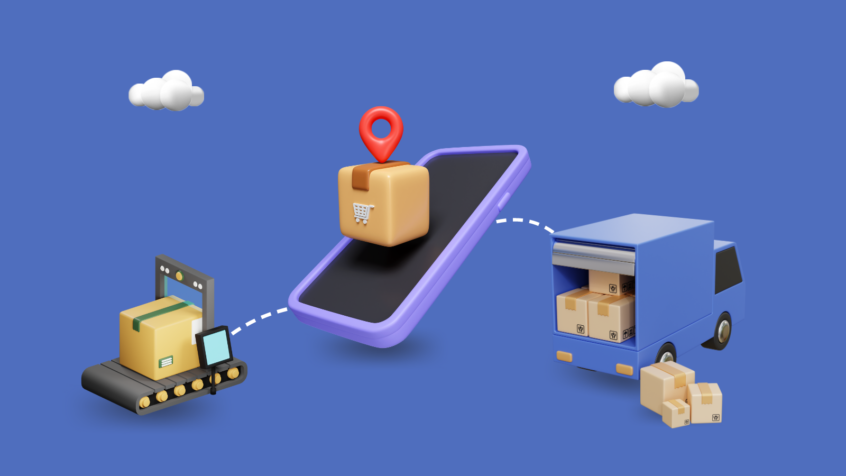In the ever-expanding world of ecommerce, shipping plays a crucial role in the success of an online business. From receiving an order to delivering it to the customer’s doorstep, the shipping process encompasses various steps that require careful planning and execution.
Best Practices to Follow for Ecommerce Shipping:
To establish a successful shipping strategy, it is essential to align your entire organization with your goals and objectives. Engage your team members, set a clear strategy, and document your SMART goals (Specific, Measurable, Achievable, Relevant, and Time-based). Remember that experience is the best teacher, so launch your shipping operations and gather valuable feedback from shoppers and customers to drive continuous improvements. Here are a few key practices to consider:
- Assemble a great team: Identify the key stakeholders responsible for making decisions about your shipping strategy. The marketing team can use shipping promotions to attract customers, while web designers and developers ensure a user-friendly experience. The fulfillment team plays a crucial role in accurate and timely order processing, and the customer service team ensures customer satisfaction. Collaborate with each team to achieve shipping excellence.
- Set the right goals: Define your shipping strategy objectives by focusing on areas that can drive growth and improve efficiency. Examples include increasing conversions by offering shipping options and rates that align with customer expectations, expanding your target audience by shipping to new geographies, or decreasing costs through alternate shipping services.
- Choosing the Best Shipping Strategy: With numerous shipping methods available, it’s important to select the ones that align with your business goals. Successful online stores often implement multiple shipping methods to create a comprehensive strategy. Let’s explore some popular options:
- Offer Free Shipping: Providing free shipping is an effective way to reduce cart abandonment. However, it’s important to remember that shipping is never truly free. To make free shipping work, you have a few options:
- Increase product prices to cover shipping costs (customer pays).
- Cover the full cost of shipping from your margins (you pay).
- Slightly increase product prices to partially cover shipping costs (both you and the customer pay).
- Offer free shipping as a discount code to certain customers.
- Charge Real-Time Carrier Rates: Charging real-time carrier rates for shipping is a practical strategy. If you’re using platforms like Shopify, you can integrate with various carriers such as USPS and Canada Post to offer your customers live pricing options. This ensures transparency and allows customers to select and pay for the specific shipping service they desire.
- Charge a Flat Rate: Flat rate shipping is a popular option, particularly when you sell products with similar sizes and weights. It’s crucial to avoid drastically undercharging or overcharging customers. Flat rate shipping works best when you have a consistent product line.
- Offer Local Delivery: Consider offering local delivery as a simple and reliable next-day option for your local customers. You can customize the delivery area based on a radius or specific zip/postal codes. Providing free local delivery for orders above a certain amount or at a low cost can help reduce overall shipping expenses and attract more local customers.
When it comes to shipping in ecommerce, you have to make critical decisions about pricing, methods, and packaging. Will you pass shipping costs to your customers or offer free or flat-rate shipping? How will you cater to local customers? here you have some considerations to help you make informed choices for your business.
- Product weights: To streamline your ecommerce shipping process, it’s important to accurately measure and update the weight of each product you sell. This information allows you to calculate shipping costs more effectively, ensuring accurate prices for your customers.
- Choose your preferred packaging: Selecting the right packaging for your products is essential. Once you’ve made your choice, input the packaging details into your ecommerce platform, such as Shopify. This enables you to calculate precise shipping prices based on your preferred packaging.
- Source your packaging: Depending on your strategy, you can order free packaging from carriers like USPS, UPS, or DHL. Alternatively, you may choose to invest in branded packaging that aligns with your brand image and customer experience.
Exploring additional logistics considerations for optimal operations
- Customs Declaration and Forms: For international shipping, including the appropriate customs documentation is crucial. These forms provide customs officers with vital information about the package’s contents, value, and whether it is a gift or merchandise. Consult your country’s postal service to determine the specific forms required to avoid any delays at customs.
- Labeling Your Packages: Labeling packages accurately and efficiently is essential for smooth shipping operations. While manual labeling can be time-consuming and impractical as your business grows, platforms like Shopify offer label printing services. You can print labels on plain paper using any printer or invest in a thermal label printer for a more streamlined process.
- Using a Fulfillment Warehouse: Partnering with a fulfillment center can automate and streamline your shipping processes. By storing your inventory at their warehouses, you can benefit from cheaper shipping rates and shorter shipping times. Fulfillment warehouses offer integration with major shipping logistics, providing you with a wide range of shipping options. However, it’s important to consider potential limitations in terms of branding customization and associated fees.
- Tracking Ecommerce Shipments and Returns: Tracking shipments is crucial for both you and your customers. Providing customers with a tracking number allows them to follow their shipment and receive updates on delivery times, setting clear expectations. Moreover, establishing a well-defined return policy is essential to handle customer returns effectively and maintain satisfaction. Focus on creating a hassle-free returns process to leave a positive impression on customers.

